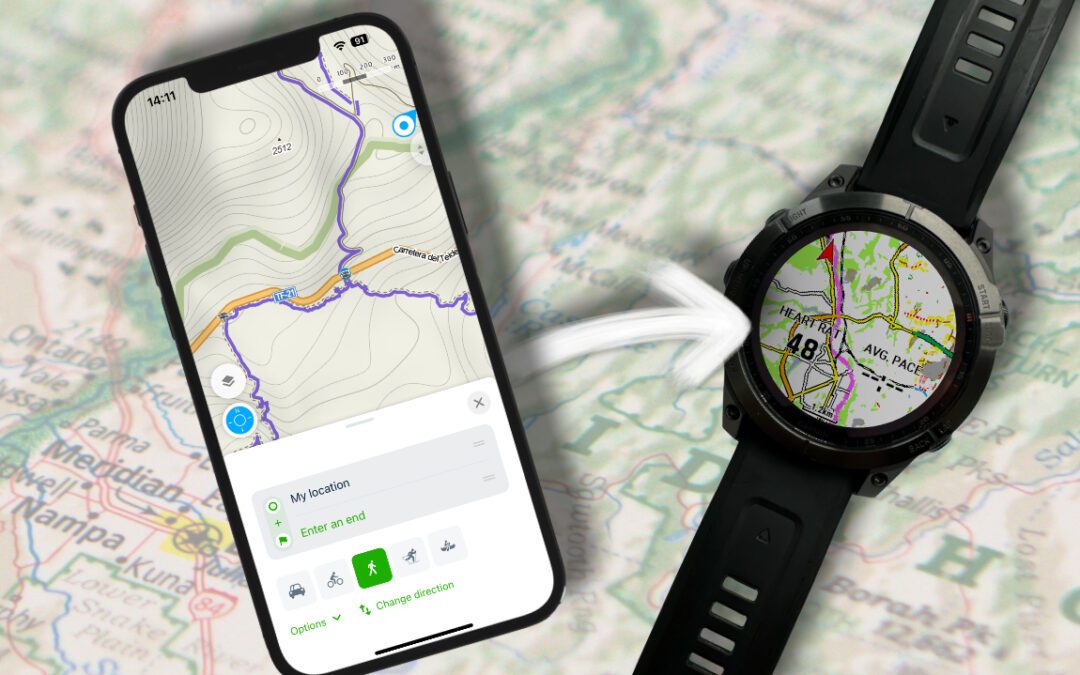Chapter 3 of the Ultimate Guide to Running With Your Garmin Watch | Series Overview >
While you could simply lace up and hit the pavement, by incorporating a few basic principles into your training, you can greatly improve its benefits. Since the running world is vast and confusing at times, I’ll give you the essential things to consider when starting to run and the basic approaches.
TABLE OF CONTENTS
3.1. There is not one ultimate way to train, but the right way for you to train
3.2. Consitency is The King
3.3. Build Your Aerobic Base First
3.4. Choose a Specific Goal
3.5. Importance of Finding Your “Why”?
3.6. Key to Effective Training: Balancing Stress and Recovery
3.7. Choosing the Right Training Approach
3.1. There is not one ultimate way to train, but the right way for you to train
Let me explain. It can be tempting to look up someone else’s training plan and follow it word for word. But that approach isn’t always the best option since your needs are unique, and your training plan should be tailored to you. We all come in different shapes, sizes, and levels of fitness, so what works for one person might not work that well for another. The beauty of the training method lies in finding what works best for you, your body type, and your current fitness level, which will require a bit of trial, testing, and adjusting.
While it’s cool to check out Kipchoges’s approach or what Kristian Blummenfelt does in his training, it’s important to be mindful of your athletic abilities and limitations. Applying the training elements of an elite athlete who trains 25-30 hours a week to a person who trains 6 hours a week may not necessarily bring the results you are looking for. Instead, it can often lead to a quick plateau or, worse, overtraining or injury.
3.2. Consitency is The King
The most important thing when it comes to running is consistency. Sure, you can go out and run a marathon off the couch, but this won’t get you fit. If you want to improve, it’s important to make running a habit and stick to it. The data is clear. If you want to build endurance and promote overall health, then, for example, four one-hour runs per week are far more effective than a single four-hour run.
Here is a simple breakdown of different frequencies and the progress you can expect:
1 run a week – 🤦♂️ sure, it’s a start, but you gotta keep at it! Good for forming an initial habit.
2 runs a week – 👨🔧 good for maintenance of your fitness, but don’t expect much progress.
3 runs a week – 🤩 great for maintenance and to start seeing improvements in your fitness.
4-5 runs a week – 😎 this is where you’ll start to see major progress and also reap most health benefits.
6+ runs a week – 🤯 great for seasoned runners and those who want to reach their true potential, but too much for beginners.
3.3. Build Your Aerobic Base First
One of the most common mistakes people make when starting to run is to focus too much on running fast. This often leads to burnout, injury, and lack of progress. A better approach is to focus on building a strong aerobic engine. In practice, this means running most of your weekly mileage (80%-90%) at a comfortable and easy pace, usually between 70%-80% of your maximum heart rate, also known as Zone 2. It’s important to stress that this is just a rough estimate. To further verify your intensity, you also should be able to maintain a conversation with someone while running without getting out of breath.
Here are a few more ways to verify whether you are training in Zone 2:
- Tips from world-renowned sports scientist Steven Seiler:
- Rate of Perceived Exertion (RPE) – this is a subjective evaluation of intensity on a scale from 1-10. For Zone 2, the RPE is around 3-4 and should be stable throughout the run.
- Endurance – you should be able to run (for beginners to walk) at this intensity for hours.
- Heart Rate Stability – once you are warmed up (15 min), your heart rate should be able to stay stable (it shouldn’t drift).
- Mental State – you should be able to let your mind wander (you can focus on nature, an audiobook, podcast, etc.).
- Post-Exercise Appetite – after Zone 2 training, you are ready to go to the dinner table. In contrast, after a high-intensity session, you don’t want to eat.
- Intensity Check – if you’re wondering: “Am I going too hard?” – you probably are.
- Tips from Ultraman Hawaii Champion Gordo Byrn:
- Breathing – entering Zone 2 is often marked by the first noticeable deepening of your breath, although the shift may be subtle.
- Comparison to Joe Friels zone model – the upper end of zone 1 in the Joe Friels zone model (around five beats lower than Zone 2).
- Tip from Alan Cousins, Exercise Physiologist & Ironman Coach:
- Blood Lactate Level – the zone above the first rise in lactate (the zone immediately below 2mmol/L).
If you stick to this approach and increase your mileage gradually by using the 10% rule (no more than a 10% increase in running mileage per week), you can prevent excessive strain on your body and reduce the risk of injury. There is evidence that by solely focusing on running at this intensity, people can improve their running times for months and even years without the need to add any intervals or harder training sessions. Sure, by incorporating speedwork, you can probably become faster even sooner, but it simply shows how effective the base training is.
The hardest thing is to be patient and humble and not give in to the temptation to push harder. For many beginners, Zone 2 can represent a brisk walk or a very slow jog, which can be humbling.
3.4. Choose a Specific Goal
Whether you want to lose weight, improve your health, train for a local 5K race, or a grueling 100-mile ultrarace, having a specific goal is important. As you can imagine preparing for a 5K or an ultra-marathon is fundamentally different, both in terms of intensity and volume. Having a specific goal in mind will help you determine the type of training you should do and also keep you motivated.
3.5. Importance of Finding Your “Why”?
Having a clear understanding of your “why” behind your goals is probably the most important factor of all. Your “why” will give you the strength to push through challenges and setbacks along the way. It serves as a constant reminder of why you started in the first place and helps you stay focused on your journey.
Whether it’s the desire to keep your health in good condition, break free from the bondage of your body and become a master of it, or maybe you simply love nature and mountains, and being extra fit means you get to see and experience more of it. Whatever your “why” may be, it’s best to make it:
- PERSONAL [deep] – reflects something important to you, not a “cool” quote you’ve heard on a podcast. Think back to the reasons that first got you into running.
- MEANINGFUL [strong] – reflects a strong enough desire to carry you through difficult times.
- RESILIENT [lasting] – doesn’t have an “expiration” date.
While qualifying for Boston may be a well-defined goal, it isn’t a particularly great “why” since once you reach this goal, your reason to continue running will dissolve.
Therefore, “becoming a lifelong athlete” might be a better one. Although, at first glance, it may seem too general (and I’m not saying it’s a perfect example), it carries certain preconditions to fulfill that vision, such as continuous self-improvement, discipline, overall health, and love for the sport, among others.
Finally, as you grow as an athlete, your “why” can change and develop over time, maturing and evolving just as you do. It’s an organic part of your journey that reflects your own growth as an athlete.
3.6. Key to Effective Training: Balancing Stress and Recovery
Endurance training can be defined as the art of finding the right balance between stress and recovery to achieve optimal adaptation. While the term “stress” primarily refers to physiological stress induced by training, it also encompasses additional factors such as work and life stress, illness, or other external stressors that directly impact one’s training. On the flip side, “recovery” is everything you do to absorb and capitalize on the training, including sleep, nutrition, and other supportive practices like stretching, massage, sauna, etc. Maintaining this equilibrium is essential; if the balance tips too far towards either excessive stress or excessive recovery, positive training adaptations will not be realized. To get the most out of your training, you need to find the right balance between pushing yourself and giving your body the rest and recovery it needs in order to adapt and improve.
3.7. Choosing the Right Training Approach
The actual run training, in its essence, is very simple as it consists of two main components: volume and intensity. Though there are various types of training approaches available, I will share two that have been proven to be effective and that I incorporate into my own training.
- Polarized Training – this type of training balances high intensity with low intensity. It involves running lots of easy runs (around 80% of the weekly volume in Zone 2) and only adding a few intense workouts (20% in Zones 4 and 5) into the mix. In running circles, this approach is also called the 80/20 training method.
- Pyramidal Training – this approach has a slightly different intensity distribution. As the name implies, it has a pyramidal-like shape distribution of intensity, where around 75% is at an easy pace (Zone 1 and 2), 20% at moderate intensity (Zone 3 and 4), and 5% of the training volume is done at high intensity (Zone 5).
As you have probably already noticed, there isn’t a huge difference between the two approaches. Although polarized training is certainly more popular among beginners and advanced runners, the latest research shows [1] that it’s a pyramidal approach that is most often used by professional athletes and seems to yield the best results. That being said, there’s still variation even among pros, and their preferred training style might lean more towards polarized or pyramidal, depending on distance they focus on and where they’re in their training cycle.
The bottom line is that both of these approaches have proven effective for improving running performance, and your specific goals may further determine which approach to take.
[1] Burnley, Mark & Bearden, Shawn & Jones, Andrew. (2022). Polarized Training Is Not Optimal for Endurance Athletes: Response to Foster and Colleagues. Medicine and science in sports and exercise. 54. 1038-1040. 10.1249/MSS.0000000000002924.
Click here to go back to Chapter 2
Click here to continue to Chapter 4





![Best Garmin Fenix 7 Watch Faces [2024]](https://dialedrunner.com/wp-content/uploads/2023/11/Best-Garmin-Fenix-7-Watch-Faces-for-Different-Occasions-1080x675.jpg)

![How To Import Gpx Course To Garmin Connect on iPhone [2024]](https://dialedrunner.com/wp-content/uploads/2023/09/How-To-Import-Gpx-Course-To-Garmin-Connect-iPhone_Header-1080x675.jpg)
0 Comments